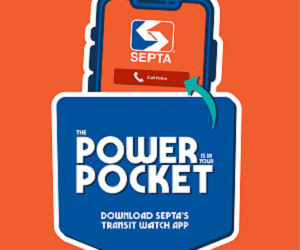
Slippery Rail Season is Upon Us
October 17, 2016

As the leaves that create the season's colorful landscape fall from trees, SEPTA is takes steps to maximize customer safety and minimize inconveniences as "Slippery Rail" season gets underway.
By mid-autumn Slippery Rail season is in full swing as falling leaves land on SEPTA's rails where they are crushed by passing trains and leave behind a slick residue. This coating decreases friction between train wheels and the rails, thus creating Slippery Rail conditions. As a secondary precaution, SEPTA may need to place trains under speed restrictions in an effort to maintain safe operations especially on inclines and declines and when vehicles approach the station platform.. Unfortunately, this can lead to delays and other inconveniences for passengers, particularly those who ride Regional Rail, Trolleys and the Norristown High Speed Line.
Each year, SEPTA takes a proactive approach to battling Slippery Rail season to try to minimize the impact to passengers. Crews are actively dispatched along the tracks with high-pressure washing equipment to blast away leaves and the slick residue they bring to rails, and oily deposits are cleaned with a combination of water, gel and sand. This action is effective in removing debris from the tracks, but short of shaking every leaf from every tree, customers may still experience intermittent service delays caused by slippery rail.
Additionally, SEPTA utilizes all communications resources at its disposal to keep customers informed about Slippery Rail conditions and possible service disruptions. Notices explaining the slippery rail battle are posted on rail cars and at stations. Whenever service is impacted, public announcements will be made as soon as information is available.
Pictured above is the equipment used along the SEPTA Regional Rail System during slippery rail season. The equipment is used during the evening over the course of October and into November.



